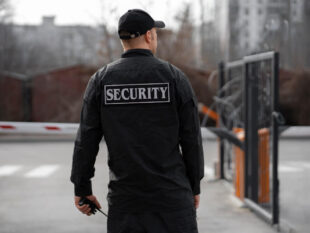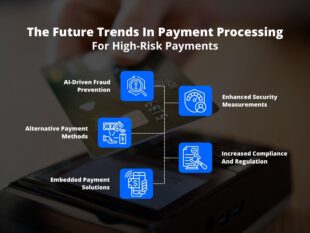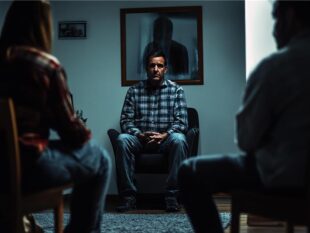Conspiracies Between Employees: A legal View of The Problem?
by Abdul Aziz Mondal Legal Published on: 11 February 2022 Last Updated on: 08 November 2024

Conspiratorial thinking may generate issues even in workplaces where most employees share the same political views. Conspiracieusually rejects authority and focuses on their own goals, manipulating others to accomplish their objectives.
Conspiracy theories (CTs) can range from the minor, such as Mary’s, a fellow employee’s pregnancy, to the more severe, such as pointing out injustice, such as that recent promotion. “Managers and employees should not dismiss conspiracy theorizing as harmless idle banter.”
Organizational Conspiracies Between Employees

The majority of recent research looks at whether organizational conspiracies between employees may predict employee outcomes and if they can help to mitigate the effects of job insecurity.
On a psychological and behavioral level, conspiracy theories have been found to alienate people from their social institutions and leaders.
Employees may be hesitant to associate their identification with an organization if they believe powerful members are plotting against them. Employees may also be more ready to leave a firm if they think it is riddled with increased organizational conspiracies between employees. These data suggest that organizational conspiracy theories influence employee loyalty and their desire to depart due to an insecure work environment.
Conspiring is Two or more people’s Affairs
There is no way for a single person to conspire. A husband and wife could not be prosecuted with conspiracy under common law unless a third person was involved. That is not the case.
Businesses, likewise, could not be charged with a crime. This has also changed. A company’s officers, employees, and agents are legally liable for crimes done for their benefit, including conspiracies between employees. One of the two cannot be an informant, whistleblower, or undercover officer.
Whether or not a co-conspirator has been tried or even identified, the conspirator is accountable if the government can prove proof of a conspiracy. Even if everyone but one co-conspirator is acquitted, the acquittal of a co-conspirator is not a defense. Furthermore, even if he is legally incapable of doing so, another employee may conspire to commit a crime on behalf of another.
However, two people may not always be sufficient. The Wharton Rule restricts conspiracy charges to the number of people needed to commit the underlying offense. “Only when the substantive offense cannot be perpetrated without collaboration is the narrow rule applied.”
According to federal law, evidence of the latter does not merge a conspiracy and the substantive offense that terminates it. The rule only applies to the violations that led to its recognition—dueling, adultery, bigamy, and incest—unless Congress specifies otherwise.
Conspiring against an employee
A conspiracy is a group of people, for instance, employees who conspire to commit a crime against the business or another employee. There is no conspiracy when one of the two parties only appears to agree, such as an undercover officer or informant.
Furthermore, mere association with known conspirators is insufficient to establish an agreement. On the other hand, the conspiracy agreement 21 USC 846 may be demonstrated by word or deed; that is, the government can prove the agreement’s existence directly or indirectly.
All relevant circumstantial evidence includes links between codefendants, mutual representation of defendants to third parties, and other evidence establishing a unity of purpose or common design and understanding among conspirators to achieve the conspiracy’s goals.
Overt Act
Conspiracy to commit a substantive offense under 18 USC 371 justice.gov requires proof that one of the conspirators did an overt act in furtherance of the conspiracy.
The occurrence of overt conduct may be crucial for evidentiary and procedural reasons in the case of prosecution under other federal conspiracy statutes that do not include such a requirement.
The overt behavior does not have to be the substantive crime that the conspiracies between employees are about, an aspect of that crime, or even a crime in and of itself. Furthermore, a single overt act in support of the scheme by any conspirators will suffice.
Co-conspirator Declarations
Witnesses testifying under oath, under cross-examination, in front of the accused and the jury is preferable to written or spoken evidence in the eyes of the law. The hearsay rule was born as a result of this decision. There are limitations and exceptions listed. Hearsay, for example, is defined as out-of-court statements intended to “establish the veracity of the topic claimed.”
Although co-conspirator remarks are sometimes an exception, they are classified as hearsay under the Federal Rules of Evidence. An out-of-court statement is not hearsay if it is “made by a co-conspirator of a party during the course and furtherance of the conspiracy,” according to Federal Rule 801(d)(2)(E)justice.gov.
“Extrinsic evidence enough to explain the conspiracy and verify the declarant and defendant’s involvement in it” is required for the first two components.
A comment supports a conspiracy if it is intended to help the conspiracy’s objectives. A remark is further if it informs a co-conspirator about the scheme’s status, involvement, or procedures. Bragging or “idle discussion or casual conversation about earlier occurrences,” on the other hand, is not considered a conspiracy claim.
Prevention of Conspiracy Theories
Leaders will be less likely to respond to detrimental CTs if they prevent their spread. One of the reasons we chose preventative medicine is that CT scans are tough to refute. “They’re self-sealing.” It’s tough to contradict or even examine them because of the same factors that support them.” These five strategies can help leaders prevent the dangerous spread of CTs:
- Determine the origins of potentially harmful rumors and CTs. Recognize that employees who work from home may feel lonely. Social distance in the workplace may hinder collaboration and communication.
- Communicate regularly and early. The leadership team keeps employees up to date on the company’s achievements and plans for future expansion. The group uses brief video chat, email, Slack, Zoom, and other technologies to keep employees informed. “An organization’s hierarchical communication pervades it.”
- Management should be a part of the process. According to Gallup, managers’ actions have a 70 percent effect on employee attitudes. Ensure that supervisors communicate with employees frequently. Managers may easily ignore employees who work from home, making them perceive that they are only contacted when an issue develops. According to Gallup, communication about expectations, performance, and careers boost engagement.
- Teach managers how to spot CTs when they appear. To stay ahead of the organizational conspiracy, arm managers with reliable information and tools.
- Establish etiquette in communicating as an essential organizational behavior. As a constitutional privilege, we must vigorously defend free expression. However, we do not want our employees to take advantage of their positions or the organization’s media outlets to spread false information that could lead to harassment or violence. We do not tolerate sexism or racism in the workplace. CT guidelines that encourage civil conversation and discourage bullying are appropriate.
Related Resource: Five Common Causes of Miscommunication in the Workplace and How to Avoid Them
Conclusion
Conspiracy is a crime that begins with a plan and concludes with the realization or abandonment of that plot. Any overt act reveals the plot’s existence. This generally entails dispersing the loot amassed by the plot. Overt acts of concealment do not prolong the conspiracies between employees unless hiding is one of the conspiracy’s primary goals.
Individual conspirators are responsible for their actions from when they join the conspiracies between employees until it ends or they withdraw. Their direct engagement is unimportant if the underlying conspiracy persists and the individual has not withdrawn.
A person who claims to have been removed from the scheme must show that he either notified his co-conspirators or disclosed the plot to authorities. The burden of proof has shifted to the defendant. Withdrawal absolves the defendant of guilt for his co-conspirators’ post-withdrawal acts, but he maintains conspiracy liability.
Read Also:





































































































